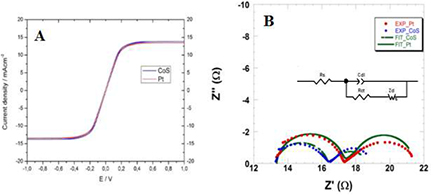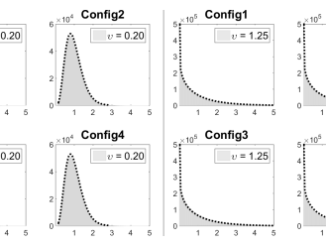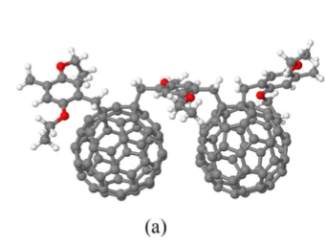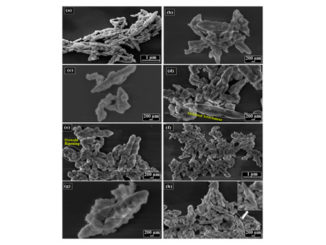
Limits on the use of cobalt sulfide as anode of p-type dye-sensitized solar cells
Abstract: Thin films of cobalt sulfide (CoS) of thickness l < 10 µm have been employed as anodes of p-type dye-sensitized solar cells (p-DSCs) when P1-sensitized nickel oxide (NiO) was the photoactive cathode and $I_{3}^{-}$ /I − constituted the redox mediator. In the role of counter electrode for p-DSCs, CoS was preferred over traditional platinized fluorine-doped indium oxide (Pt-FTO) due to the lower cost of the starting materials (Co salts) and the easier procedure of deposition onto large area substrates. The latter process was carried out via direct precipitation of CoS from aqueous solutions. The photoconversion efficiency (η) of the corresponding device was 0.07%. This value is about 35% less than the efficiency that is obtained with the analogous p-DSC employing the Pt-FTO anode (η = 0.11). Unlike p-DSCs based on Pt-FTO anodes, the photoelectrochemical cells employing CoS electrodes showed that this anodic material was not able to sustain the photocurrent densities generated by P1-sensitized NiO at a given photopotential. Illumination of the p-DSCs with CoS anodes and P1-sensitized NiO cathodes actually induced the reverse bias of the photoelectrochemical cell with CoS behaving like a p-type semiconductor with no degeneracy.
Author(s): Bonomo, Matteo; Congiu, Mirko; De Marco, Maria Letizia; et al.
Journal of Physics D-Applied Physics
Volume: 50 Issue: 21 Published: 2017
DOI: http://dx.doi.org/10.1088/1361-6463/aa6a79
PDF: Limits on the use of cobalt sulfide as anode of p-type dye-sensitized solar cells




